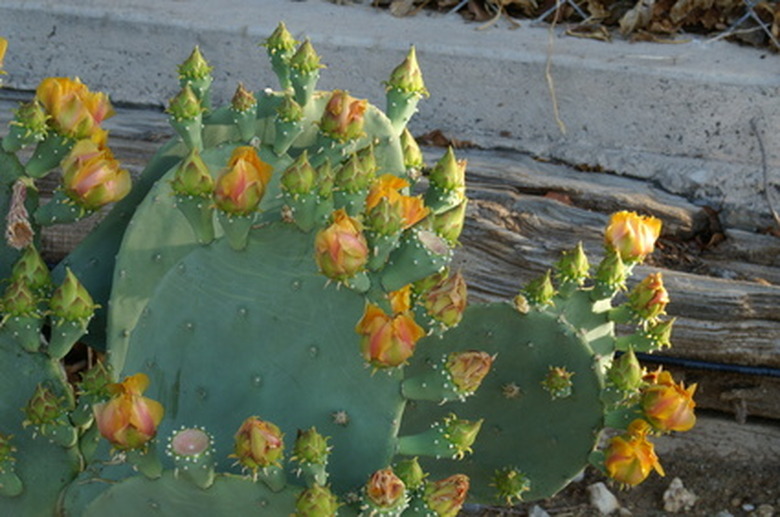The Life Cycle Of Desert Plants
Though the desert climate, with its extremes of temperature, seems inhospitable to plants and animals, many species not only survive but thrive. Adaptations in life cycle and physical and chemical processes make that survival possible. Some plants have long roots that pull moisture out of the soil, facilitating growth and reproduction. Others have developed physical adaptations, like fleshy stems that retain moisture. Still others go dormant during extremely dry periods–effectively "sleeping" through inhospitable conditions–and flower immediately after rainy seasons.
Xeriphytes: Life Cycle
The word "xeriphyte" comes from the Greek word, "xeros," meaning "dry." Xeriphytes have adapted themselves to accommodate extremely dry conditions with fleshy stems that store water and waxy stem coatings that prevent rapid transpiration or moisture loss. The cactus is an example of a xeriphyte. Very few cactus seeds germinate over the plant's lifetime and those that do may sprout in the shade of a "nurse" plant. Flowers appear on trunks or arms of the plant (as on the saguaro cactus). When pollinated by insects or bats, cacti develop fruits, which ultimately ripen, split open and scatter seeds.The seeds often serve as food sources for desert birds and animals.
- Though the desert climate, with its extremes of temperature, seems inhospitable to plants and animals, many species not only survive but thrive.
- Xeriphytes have adapted themselves to accommodate extremely dry conditions with fleshy stems that store water and waxy stem coatings that prevent rapid transpiration or moisture loss.
Phreatophytes: Life Cycle
Phyreatophytes, like the mesquite tree and creosote bush, survive because they develop extremely long and/or deep roots that can pull moisture from deep in the soil. These plants set large quantities of seed, generally in spring each year and the seed can be distributed by passing through the guts of animals, traveling via human shoes or being transported by way of floods. The seed remains viable for a long time. After germination, seedlings form long roots quickly. If the plants are injured, they regrow readily from stumps or roots.
Desert Annuals and Perennials
Tourists often flock to desert areas in the spring to see the desert "bloom." This is evidence of an adaptation by which perennials' and annuals' life cycles are in sync with the seasons. Plants go dormant in the hottest, driest part of the year. The rainy season arrives, bringing plants back to active growth and stimulating rapid production of flowers. Pollination takes place and the plants set seed in a very short period of time. Annuals complete their life cycles at the end of this growth and renewal period. Perennials go dormant.
- Phyreatophytes, like the mesquite tree and creosote bush, survive because they develop extremely long and/or deep roots that can pull moisture from deep in the soil.
- These plants set large quantities of seed, generally in spring each year and the seed can be distributed by passing through the guts of animals, traveling via human shoes or being transported by way of floods.
Examples of Desert Plant Types
Among the xeriphytes are well known succulent plants like various cacti, including saguaros and opuntia, as well as agaves. Various species of spike moss (Selaginella) are included in the phreatophyte category, including those that sometimes go by the common name "resurrection fern." Annuals, whose seeds can survive temperature extremes and flower after rainy periods, include such well-known varieties as Mexican gold poppy, lupine and evening primrose.
Asexual Reproduction
To ensure survival, some desert plants reproduce asexually as well as sexually. The palo verde (Arizona's state tree) and the aspen both sprout offspring from points on their roots. Agaves produce numerous offspring, spreading by means of underground rhizomes. Mother-of-Millions, a species of kalanchoe, is characteristic of plants that produce aerial plantlets–the "millions" of the common name. In all cases of asexual reproduction, the offspring plants are identical to the parents.
- Among the xeriphytes are well known succulent plants like various cacti, including saguaros and opuntia, as well as agaves.
